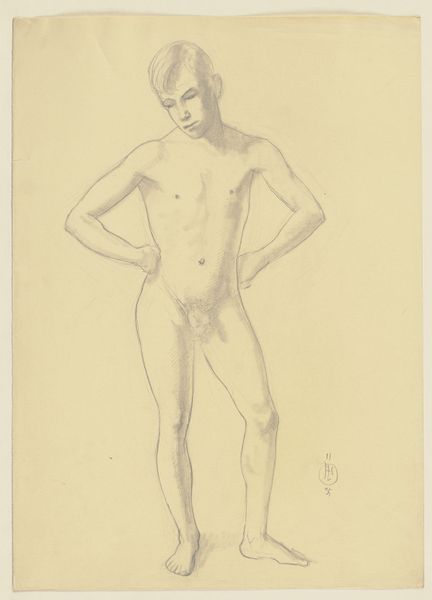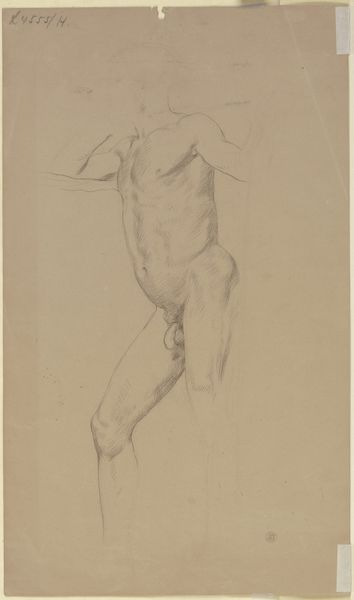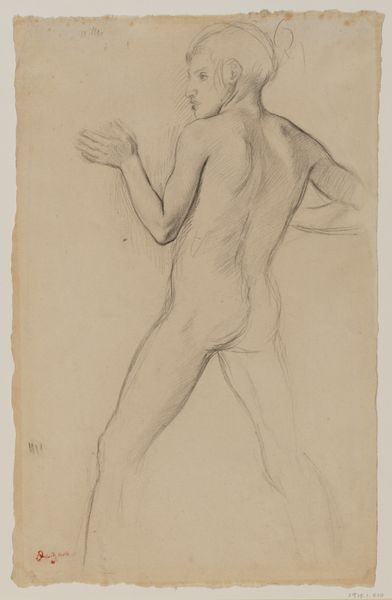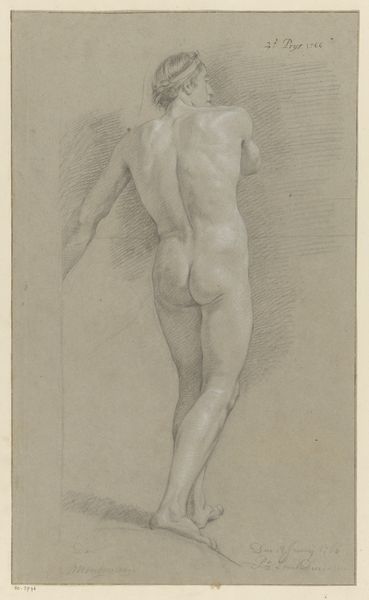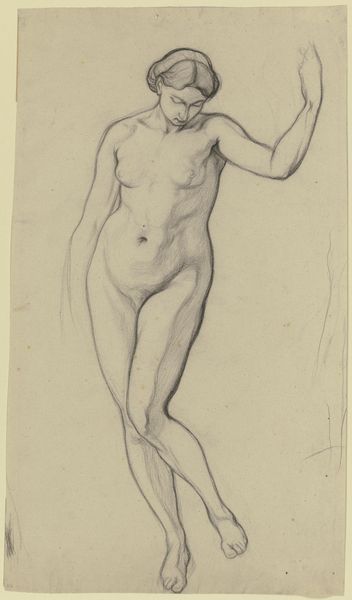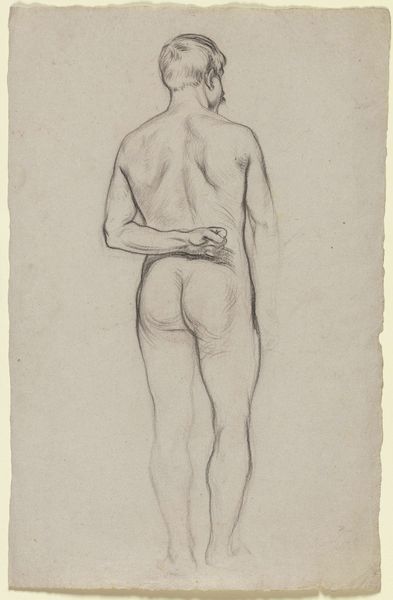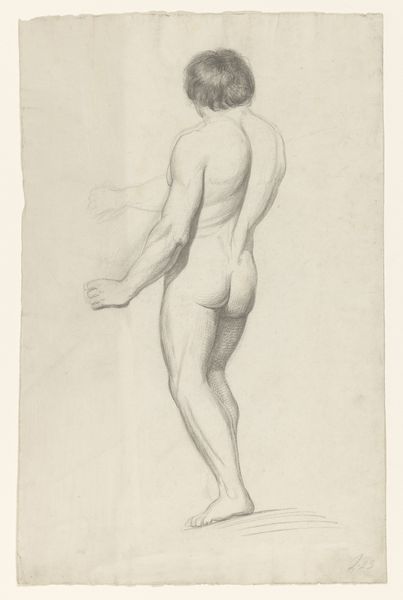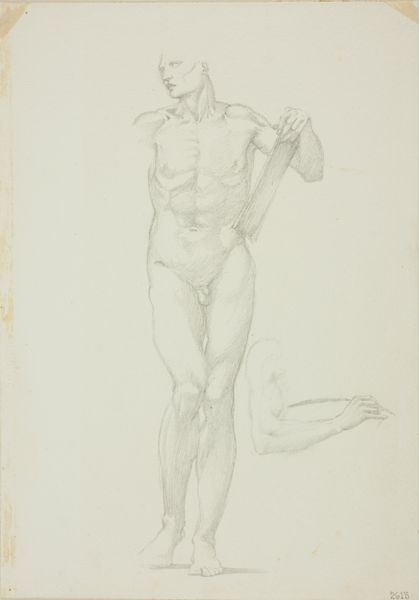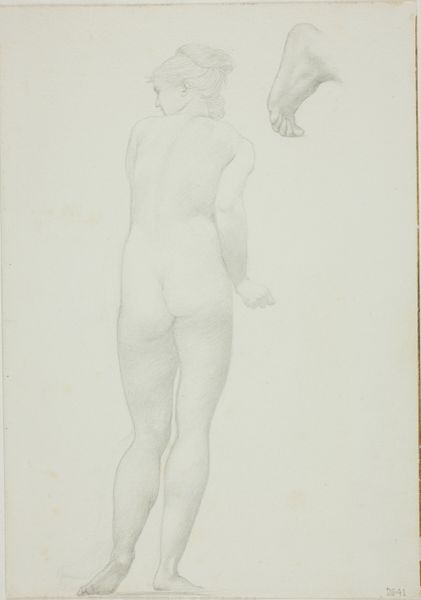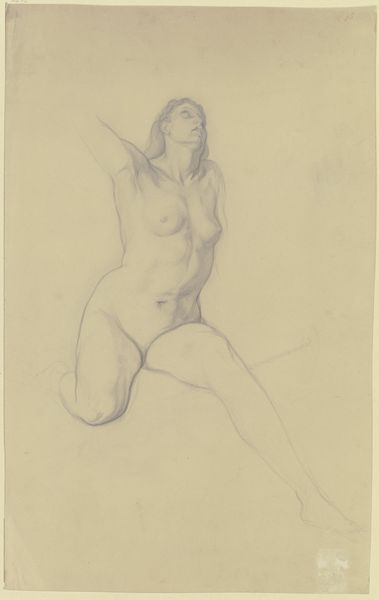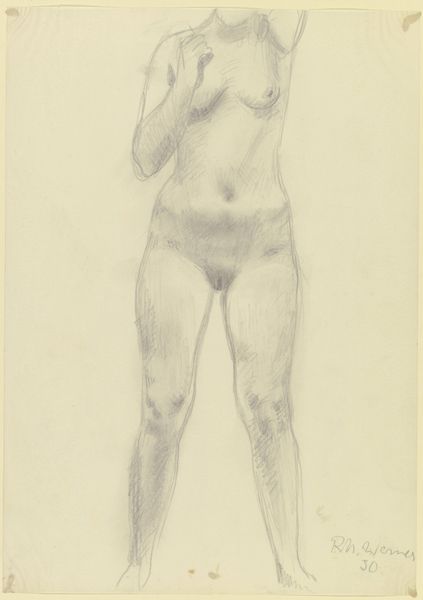
drawing, print, paper, pencil, graphite
#
portrait
#
pencil drawn
#
drawing
#
neoclacissism
# print
#
pencil sketch
#
charcoal drawing
#
figuration
#
paper
#
pencil drawing
#
pencil
#
graphite
#
portrait drawing
#
academic-art
#
nude
Dimensions: 411 × 267 mm
Copyright: Public Domain
Curator: What strikes me immediately about this drawing is its delicate quality—it’s almost ethereal. The light seems to emanate from the figure itself. Editor: You've honed in on an interesting detail there. The artwork is titled "Study of a Standing Nude Youth" created around 1820 by Julius Schnorr von Carolsfeld. It's currently housed at The Art Institute of Chicago, and executed in pencil and graphite on paper. This was part of a long lineage of the male nude, so deeply steeped in ideas of the ideal form. Curator: The figure's stance is intriguing. The crossed legs and downward gaze give off a sense of introspection or perhaps vulnerability. The work invites us to contemplate questions of representation and spectatorship. Consider how ideals of masculinity have been constructed and portrayed throughout art history and the continued impact of those constructions on contemporary understandings of identity, power, and representation. Editor: Absolutely. Notice the subtle shading—the hatching and cross-hatching—that defines the musculature without being overly assertive. This contributes to the drawing's soft and dreamlike atmosphere. It strikes me as incredibly academic, looking back to classical ideals while already hinting at a departure from strict, polished lines. Curator: I see the Neoclassical influence, but the youth's averted gaze suggests an element of self-consciousness, maybe even shame or discomfort, that disrupts any simple reading of ideal beauty and power. What I wonder is if we can extend this to how institutions historically excluded so many different bodies? How might the idea of an "ideal" lead to various exclusions in how we portray human figures in general? Editor: Perhaps. Yet the figure remains idealized and generalized; an exercise in form that suppresses, say, a narrative, any unique personalizing aspects. But let’s not get lost in only theory! The precision and accuracy, while impressive, do not, and here's the interesting point, eclipse the very act of mark-making that creates an incredibly well balanced finished whole. Curator: The power of historical art lies not just in its formal execution but in the discourses it reflects. I can appreciate that precision though. Editor: And I appreciate how you draw attention to the complex, ongoing negotiation that art initiates around bodies and what it means to represent them, especially through an artwork's pure compositional elements and skillful use of pencil and paper. Curator: Precisely! The act of seeing this kind of historical work critically is crucial if we aim to deconstruct historical canons and pave pathways toward greater inclusivity.
Comments
No comments
Be the first to comment and join the conversation on the ultimate creative platform.
